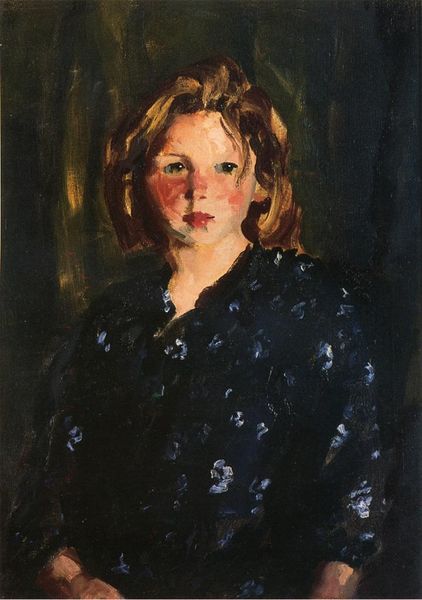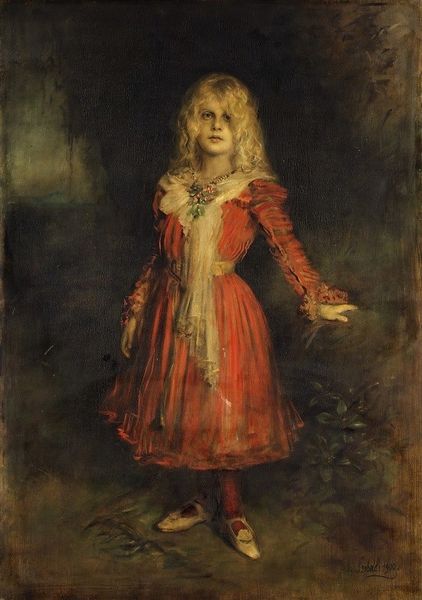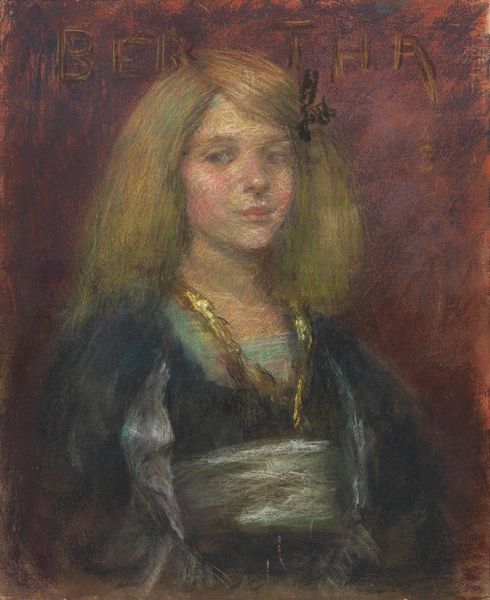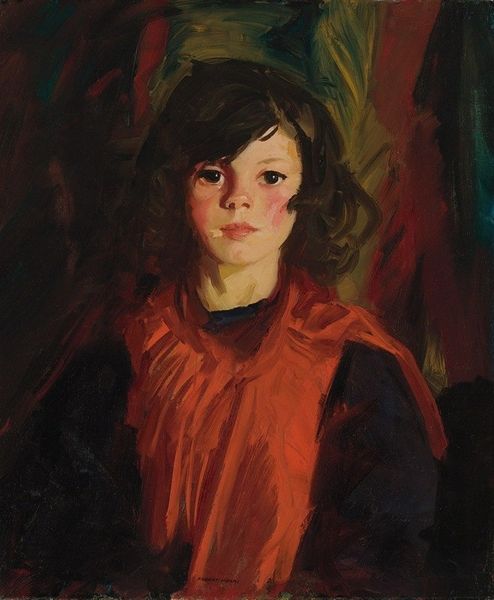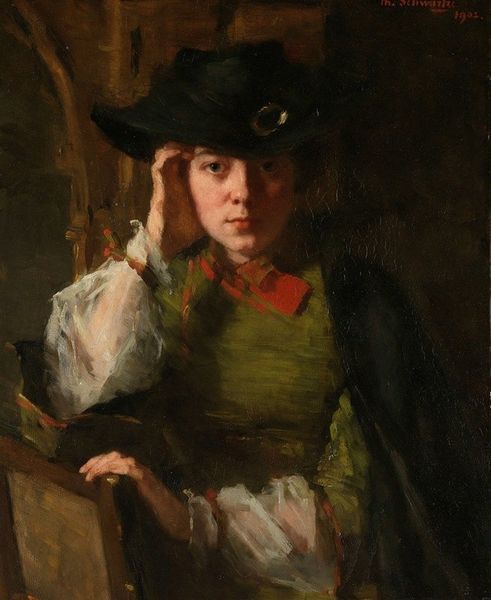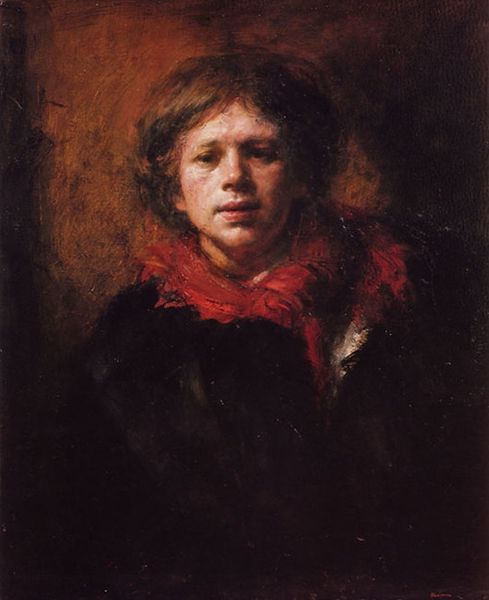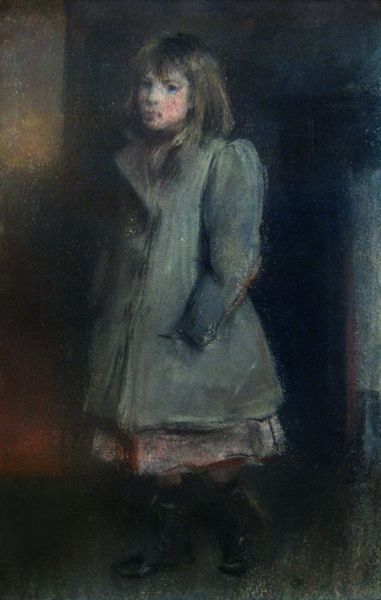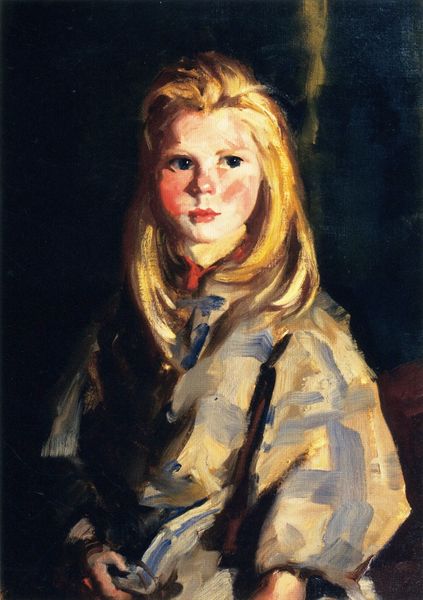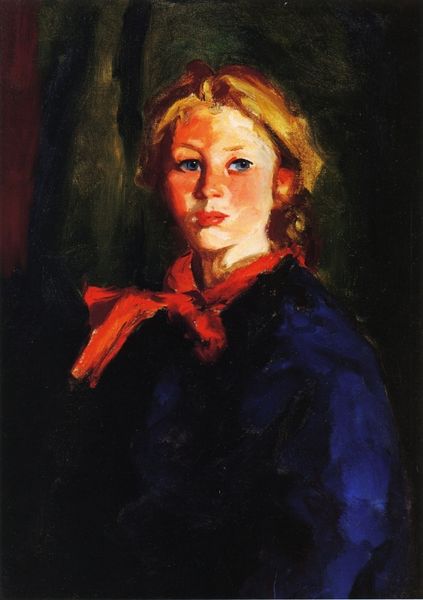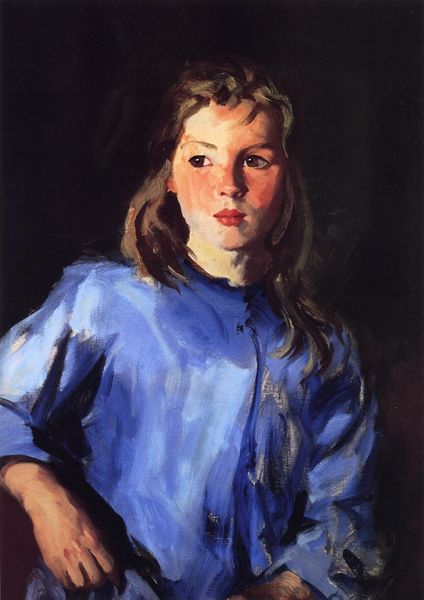
painting, oil-paint, impasto
#
portrait
#
painting
#
oil-paint
#
impasto
#
ashcan-school
#
realism
Copyright: Public domain
Editor: This is Robert Henri's "Spanish Urchin," sometimes called "Laugh Cheeks," an oil painting with a very impasto technique. I find the almost exaggerated expression of joy so captivating, but also somewhat… theatrical? How do you interpret this work, especially given its context? Curator: That theatricality, that’s key! Think about the Ashcan School to which Henri belonged. They were invested in representing everyday life, yes, but also in challenging the art establishment. Henri was very interested in performance as it represented human interaction. Look at the rosy cheeks, and the slightly blurred edges of the figure. Doesn't that imply a certain role-playing? Editor: It does. It's not a naturalistic portrait. But where does the "Spanish" come in, since the setting looks like an interior studio? Curator: "Spanish" often coded for a certain exoticism at the time, playing into Orientalist fantasies that were deeply intertwined with colonialism and the commodification of the “other.” Perhaps Henri aimed to explore how identity becomes performative under such gazes? Who is this child *becoming* through Henri's brush? Editor: So it’s not necessarily about Spanish heritage itself, but about the *idea* of Spanishness? That changes the whole read of it. I had been approaching it as a simple portrait, but now I see it much more critically, especially in questioning how that child's identity may be more of a performance, whether forced or innocent. Thank you for that insight! Curator: It's about understanding those layers. Art's not neutral; it reflects and reinforces existing power structures. We should approach each brushstroke with a questioning mind!
Comments
No comments
Be the first to comment and join the conversation on the ultimate creative platform.
